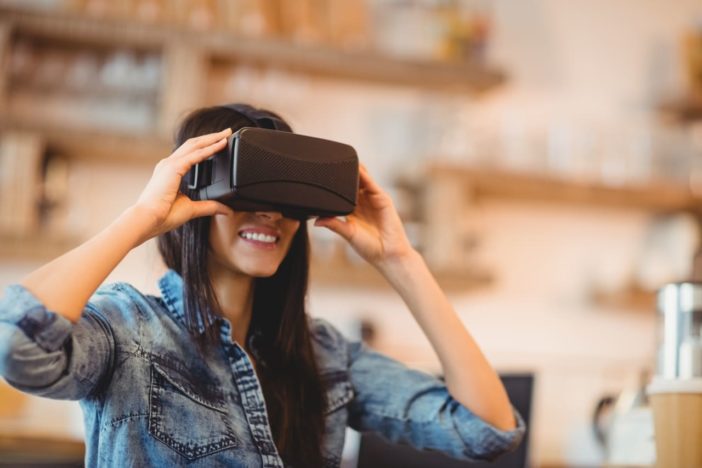People have been fascinated by virtual reality (VR) for decades. It’s immersive and interactive, transforming anyone’s experience when it comes to gaming or entertainment. The whole idea of the technology is just captivating.
However, VR applications aren’t limited anymore to the gaming and entertainment industries. Its applications for business growth hold great potential. In fact, more and more business organizations now work with VR development service providers to take advantage of the technology.
Here are some ideas of how business owners can incorporate virtual reality into their companies and profit from it:
1. Employee Or Staff Training
Lack of knowledge from employees presents the risk of costly mistakes, which can be detrimental to any business. That’s why business owners need to provide their staff with safe and effective training and education, especially during the onboarding stage.
The problem with periodical training programs for tenured employees or orientation training for new hires is that they consume significant amounts of an organization’s resources. This is where VR comes in and offers help. The technology enables companies to reduce training costs while creating more efficient training programs and environments.
Here are some of the cost-reduction benefits that VR-powered training programs provide:
- Eliminates the need for physical attendance from both trainees and instructors.
- Creates a simulated training environment. So, physical training areas or centers won’t be necessary anymore.
- Simulation of the products or tools required in the training programs. This will preserve the condition of the actual equipment.
VR training programs can include the correct handling of hazardous materials or delicate equipment for businesses in the manufacturing industries. VR also works for enhancing effective interaction with clients or customers in challenging scenarios in retail.
One good example of virtual reality for training employees or staff is immersing customer representatives in a simulated environment where huge crowds and long queues exist to prepare for upcoming events, like holiday sales.
2. Remote Teams Communication And Collaboration
Remote work has become a trend during the pandemic. While it saves time, effort, and money for both employers and employees, there’s still a need for more effective collaboration methods than the current chat, voice, and video communication tools widely used nowadays.
VR technology can make in-person meetings possible even though employees aren’t in a centralized location. That way, they can share insights and innovate more effectively and faster.
Since incorporating VR into an organization’s remote work management strategies allow employees to work in the same environment and share feedback and ideas in real-time, maximum productivity can be achieved for project collaborations, team meetings, and company-wide conferences.
If you’re planning to host virtual events to engage your customer base, VR technology can also help.
3. Product Prototyping And Testing
Virtual reality has unique applications in the product design, prototyping, and testing process. In the past, developing some products aren’t only expensive but it’s also time-consuming and risky. Thanks to VR technology, everything has become faster and cheaper than ever before.
Nowadays, manufacturers use VR to design products even without the expensive, full-scale prototypes. How’s that possible? VR helps manufacturers comprehensively view alterations through the technology’s immersive experience. In other words, it provides you with a set of special tools and approaches for exploring ideas when developing a product–from concept to launch.
With VR technology incorporated into your manufacturing processes, you don’t have to spend a significant amount of your resources on prototypes that don’t guarantee results. That’s because VR already allows manufacturers to test products in real-life situations to understand their limits before anything goes to the market. As a result, you can better predict customer needs, which opens up an opportunity for an enhanced brand experience.
4. Marketing (Revolutionized Way Of Showcasing Products To Potential Buyers)
Consumers always want to try a product before shelling out for it. By offering a simulation through VR technology, you can lower the barrier to entry for potential buyers. That’s because virtual reality immerses customers in a unique product experience. Without the need to actually display your products, consumers can choose from different options in a virtual environment where product touching and modification are possible. Sometimes, it’s even possible to customize the virtual scenarios according to the needs of the customers.
If you’re looking for inspirations, here are some ideas on how to use VR for revolutionizing product marketing or trials:
- Car dealers can offer a VR test drive to potential buyers using their phones.
- Apparel companies can allow customers to virtually try on clothes or shoes through a mobile app.
- Real estate professionals can also do a virtual house tour for potential homebuyers.
Enhanced product trials through VR marketing can be utilized for reducing return costs or getting unwanted products back. It also works best for increasing customer loyalty by educating consumers on how to benefit the most from a product.
Final Thoughts
Virtual reality can help businesses streamline their operations so they’ll stand out from the competition. Don’t think of the technology as a toy but rather as a tool for transforming your business processes. Now is the time to power up your company with VR using the ideas discussed here!



